At a time of year when there’s no shortage of faux decor—faux trees, faux berries, faux garlands, faux mistletoe, for starters—it’s nice to have a few real plants around. The plants we typically think of as “holiday” plants don’t usually bloom at this time of year. Rather, they are forced (although perhaps “trained” is a nicer word) to bloom in the depths of winter, when we can all use a little brightness in our lives.
The good news is that the people who grow the plants we buy take care of the timing, so, at least for the first year, all you have to do is keep them alive and mostly happy.
POINSETTIAS
I have pretty strong opinions on this quintessential holiday plant, which can be summed up as a general tolerance of real colors and an extreme dislike on any that have been dyed an unnatural color. But the good news is that the care is the same for all of them.
Poinsettias will appreciate bright but indirect light, and a good amount of it. But placing them to find that perfect spot can be tricky, because they won’t be happy in drafts or near a radiator.
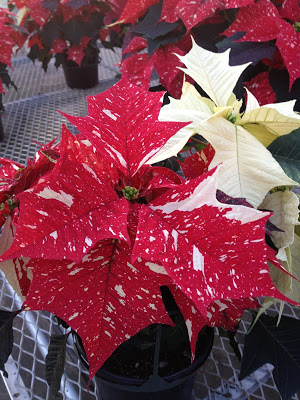
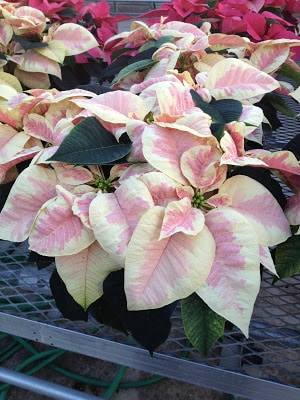
But here’s a secret: If you buy a healthy plant, it will tolerate a lot less light than it would optimally receive for at least a few weeks.
You can’t fudge it on the watering though. First off, if you’re going to leave it in a foil wrapper, immediately cut a hole in the bottom of that so that water doesn’t pool in the foil. Water when the soil is just dry, but allow all excess water to run out the bottom, making sure it doesn’t sit in water.
If you want to keep it going after the holidays, feed it every three to four weeks with any houseplant fertilizer.
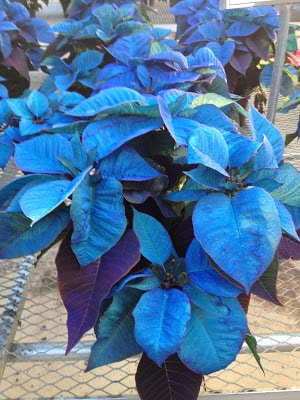
AMARYLLIS
Now we’re talking. I really love amaryllis, and why wouldn’t you? They don’t take up much room because of their vertical habit and they don’t ask for much in terms of care. And on top of that, there are so many wonderful varieties in a colors from green to deep red, orange to all shades of pink, white and even yellow. Big box stores will likely only carry basic varieties, but bulb suppliers typically have a great selection that will carry you right through winter.
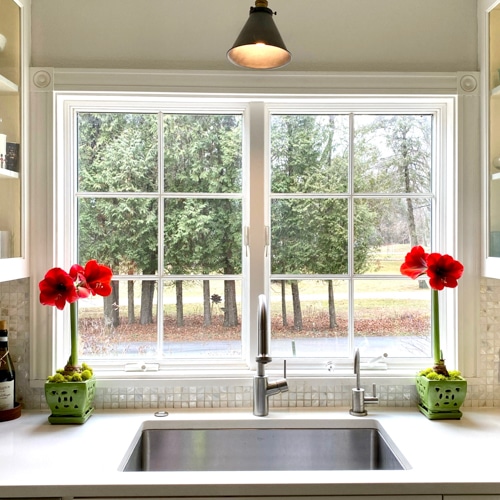
The best thing about amaryllis is that they are bulbs, and the best thing about bulbs is that they have everything they need to flower right in that little bulb package. That’s why you can pick them up dipped in wax and they will still bloom.
I prefer to grow them in soil, which is simple so long as you remember one important rule: Never bury the bulb. Unlike the way you plant bulbs in the landscape, amaryllis bulbs should stick out of the soil, with at least a third of the bulb above the soil level. Firm soil around the bulb to help keep it steady when it sends up those big flower stalks. Water it after planting (around the bulb, never IN the bulb), and then wait for the soil to feel dry up to the middle knuckle of your finger before you water again.
You can also grow amaryllis in glass vessels with the roots (not the bulb) just touching the water. For more on that method, check out this video.
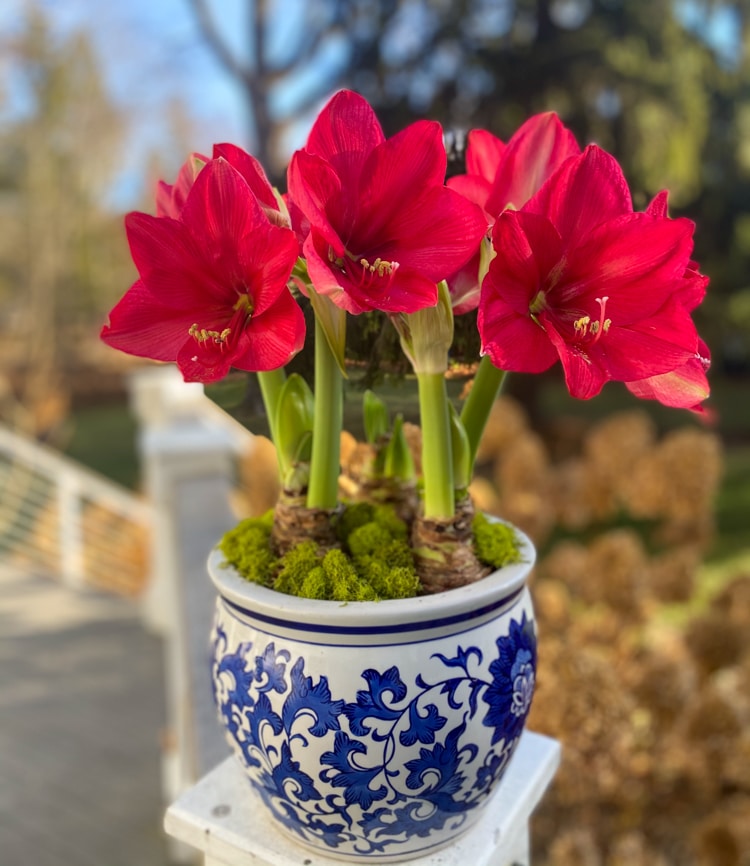
Once you’ve planted the bulb, put it in a warm spot, and as soon as it sprouts, you’ll want it in good light. If you move it out of direct light when the buds open, the flowers will last longer.
When your amaryllis has finished blooming—and keep in mind that many bulbs will send up multiple flower stalks—nip off the spent flowers, leaving the stalk to turn yellow, when you can cut it off. It’s not a great look, but this is a good time to move it to a sunny window where you won’t have to look at it much. Fertilize it every three to four weeks and water regularly.
Let it vacation outdoors in summer, continuing with the fertilizing. You can attempt to schedule when it will rebloom, by moving it to a cool, dark place for two to three months and withholding water. Bring it out and put it in fresh soil in a sunny window four to six weeks before you hope to see blooms.
CHRISTMAS CACTUS
Christmas cactus is great because it’s a little different than the usual floral fare, and easy to care for.
Like other plants we’ve covered, it will appreciate bright but indirect light.
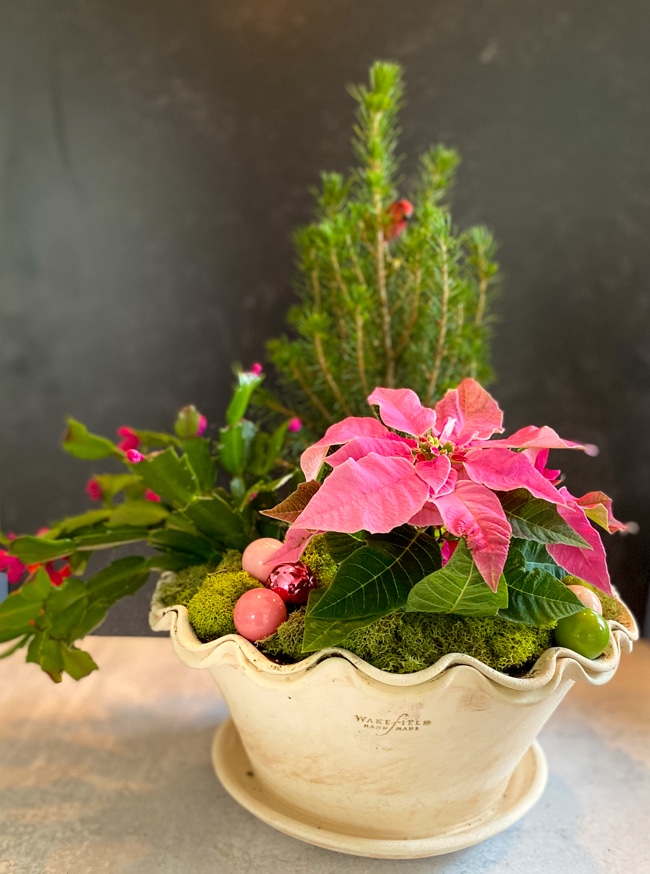
The trickiest part of Christmas cactus is getting the watering right. It’s a succulent, so it wants to dry out a bit between waterings, but you don’t want it to fully dry out. Stick a finger pretty far in the soil to check for moisture. If it feels dry, it’s time to water, and allow the water to drain out freely.
Ironically it appreciated humidity, which can be achieved by a bit of a spritz with an atomizer, or setting it on a few pebbles in a tray that holds some water.
After it blooms, keep it a bit drier. It too, can summer outside in a shady area and then it should be keeps in a cool area when it comes back in. Abuse it a little. Withold water until it wilts. And then in November, start treating it right, fertilizing with a very dilute fertilizer, and putting it in a bright spot. With luck, you’ll be treated to more blooms.
A FEW ADDITIONAL THOUGTS ON WINTER PLANTS
There are a few common notes among most of these plants.
First off, know that some of these plants can be harmful to pets, so do a little research and know your pet’s habits to be safe. Some cats are obsessed with plants and others couldn’t care less.
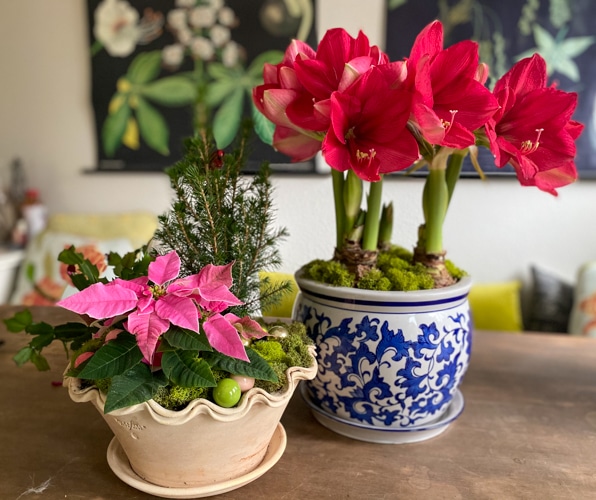
All of them are sensitive to cold temperatures, so take care when you purchase them. Have the store wrap them well. Paper is a better insulator than plastic so ask for a paper bag. It’s also helpful if the car is warm when you bring the plants out of the store.
As you might have noticed, it can be a little tricky to get these plants to rebloom on schedule. If you’re up for that kind of care, more power to you. Consider growing these plants, most of which can be picked up relatively inexpensively, as seasonal plants that will make nice compost when you’re done with them. They cost no more than a nice bouquet and there’s no shame in letting them serve their purpose and being done with them, just like you would with a bouquet.
Looking for some new ways to spruce up those winter pots? Check out this video.


4 Responses
I tried to store my amaryllis bulbs from last year. I didn’t water them and kept them in a dark basement for a few months. They look great but are only sending up leaves but no flowers. Any ideas?
Love your pair of Amaryllis and their pots. Perfect combo, perfect placement. I have taken to doing Cyclamen in pots in the winter and little ferns when I see them to buy.
I like blue poinsettias! Where do I get them? I can then have “Blue Christmas “ just like Elvis.
Merry Merry
FYI: I plant my amaryllis in the shade in my flower beds in the spring after all danger of frost. They bloom like summer bulbs here in Oklahoma but not regularly.